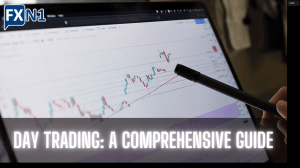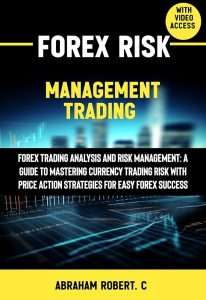Mastering Forex Trading with Demo Accounts: A Comprehensive Guide
Conquer the forex market! Learn & practice with a demo account before risking real money. Our guide helps you navigate the complexities of currency trading and build winning strategies. Start your risk-free journey today!
Forex trading, the global exchange of currencies, presents both immense opportunity and significant risk. For newcomers, the sheer volume of information and the potential for substantial losses can be daunting. Fortunately, a powerful tool exists to bridge this gap and empower aspiring traders: the Forex trading demo account. These accounts offer a risk-free environment to learn, experiment, and refine trading strategies before committing real capital. This comprehensive guide will explore the intricacies of demo accounts, helping you understand their benefits and how to effectively utilize them for success.
Understanding the Power of Forex Trading Demo Accounts
A Forex trading demo account mirrors a real trading environment, providing access to the same trading platforms, charting tools, and market data. However, instead of trading with real money, you use virtual funds. This allows you to practice trading strategies, test different indicators, and develop your skills without the fear of financial repercussions. It’s like a virtual trading simulator, offering a safe space to hone your abilities.
The primary advantage is the ability to learn without risk. Mistakes are inevitable, especially when learning a complex skill like Forex trading. With a demo account, these mistakes are cost-free, allowing you to identify and correct errors without any financial consequences. This iterative learning process is crucial for developing a robust trading strategy and gaining confidence.
Choosing the Right Forex Trading Demo Account
Not all demo accounts are created equal. Choosing the right platform is crucial for a successful learning experience. Consider factors such as the platform’s user interface, the availability of charting tools and indicators, the range of tradable assets, and the quality of customer support. A user-friendly platform will significantly enhance your learning experience.
Many reputable Forex brokers offer demo accounts. Research different brokers, comparing their offerings and reading reviews from other traders. Look for brokers with a robust reputation and a commitment to providing excellent customer service. A reliable broker will provide a stable and dependable platform for your learning journey.
Key Features to Look For:
- Intuitive Interface: A user-friendly platform is essential for efficient learning.
- Comprehensive Charting Tools: Access to a variety of technical indicators is crucial for technical analysis.
- Realistic Market Data: The demo account should use real-time or delayed market data for accurate simulation.
- Excellent Customer Support: Reliable support can be invaluable when encountering difficulties.
- Variety of Trading Instruments: Access to a wide range of currency pairs and other assets provides diverse learning opportunities.
Mastering Forex Trading Strategies with a Demo Account
A demo account provides the perfect environment to explore and master various Forex trading strategies. You can test different approaches, including technical analysis, fundamental analysis, and scalping, without jeopardizing your capital. This allows for a thorough understanding of each strategy’s strengths and weaknesses.
Begin by focusing on understanding the basics. Learn about currency pairs, pip values, leverage, and margin. Gradually progress to more advanced concepts such as technical indicators, chart patterns, and risk management techniques. Experiment with different timeframes and trading styles to find what suits your personality and investment goals.
Strategies to Practice:
- Technical Analysis: Experiment with various indicators like moving averages, RSI, and MACD.
- Fundamental Analysis: Analyze economic news and events to predict currency movements.
- Scalping: Practice short-term trading strategies focused on small price movements.
- Swing Trading: Develop strategies for holding positions over several days or weeks.
- Position Trading: Explore long-term strategies holding positions for months or even years.
Risk Management and Money Management in Demo Trading
Even in a demo account, it’s crucial to practice sound risk management principles. This includes setting stop-loss orders to limit potential losses and using appropriate leverage. While the virtual nature of the account eliminates financial risk, practicing these techniques is vital for developing good trading habits. These habits will be essential when transitioning to live trading.
Money management involves determining the appropriate position size for each trade based on your risk tolerance and account balance. In a demo account, you can experiment with different position sizing strategies to find what works best for you. This disciplined approach will protect your capital and enhance your profitability in the long run. Remember, consistent profitability comes from a well-defined trading plan and disciplined risk management.
Transitioning from Demo to Live Forex Trading
Once you feel confident in your trading skills and have developed a consistent profitable strategy in your demo account, you can consider transitioning to live trading. However, don’t rush this process. It’s crucial to ensure you fully understand the risks involved and have a well-defined trading plan. A gradual transition, starting with small trades, is recommended.
Before transitioning, review your trading journal meticulously. Analyze your winning and losing trades, identifying patterns and areas for improvement. This self-assessment will help you refine your strategy and approach live trading with increased confidence. Remember that even experienced traders experience losses; consistency and discipline are key to long-term success.
Advanced Techniques and Strategies for Forex Demo Accounts
Beyond the basics, demo accounts offer opportunities to explore advanced trading techniques such as automated trading systems, algorithmic trading, and the use of more complex indicators and charting tools. This allows you to experiment and refine your approach before implementing it with real funds. Experimentation is key to mastering the complexities of the Forex market.
Consider exploring backtesting strategies. Backtesting involves using historical data to simulate the performance of a trading strategy. This process can provide valuable insights into a strategy’s potential profitability and risk profile before using it in live trading. Thorough backtesting can significantly increase your chances of success.
The Importance of Continuous Learning and Adaptation
The Forex market is dynamic and constantly evolving. What works today may not work tomorrow. Continuous learning and adaptation are crucial for long-term success. Even after transitioning to live trading, regularly review your performance, adjust your strategies as needed, and stay informed about market trends and developments. The Forex market is a challenging yet rewarding environment; continuous learning is essential for navigating its complexities.
Stay updated on market news and economic events. Utilize reputable sources of financial information and consider attending webinars or workshops to expand your knowledge and skills. Regularly analyze your trading performance to identify areas for improvement. Adaptability and a willingness to learn are vital for navigating the ever-changing landscape of the Forex market.







